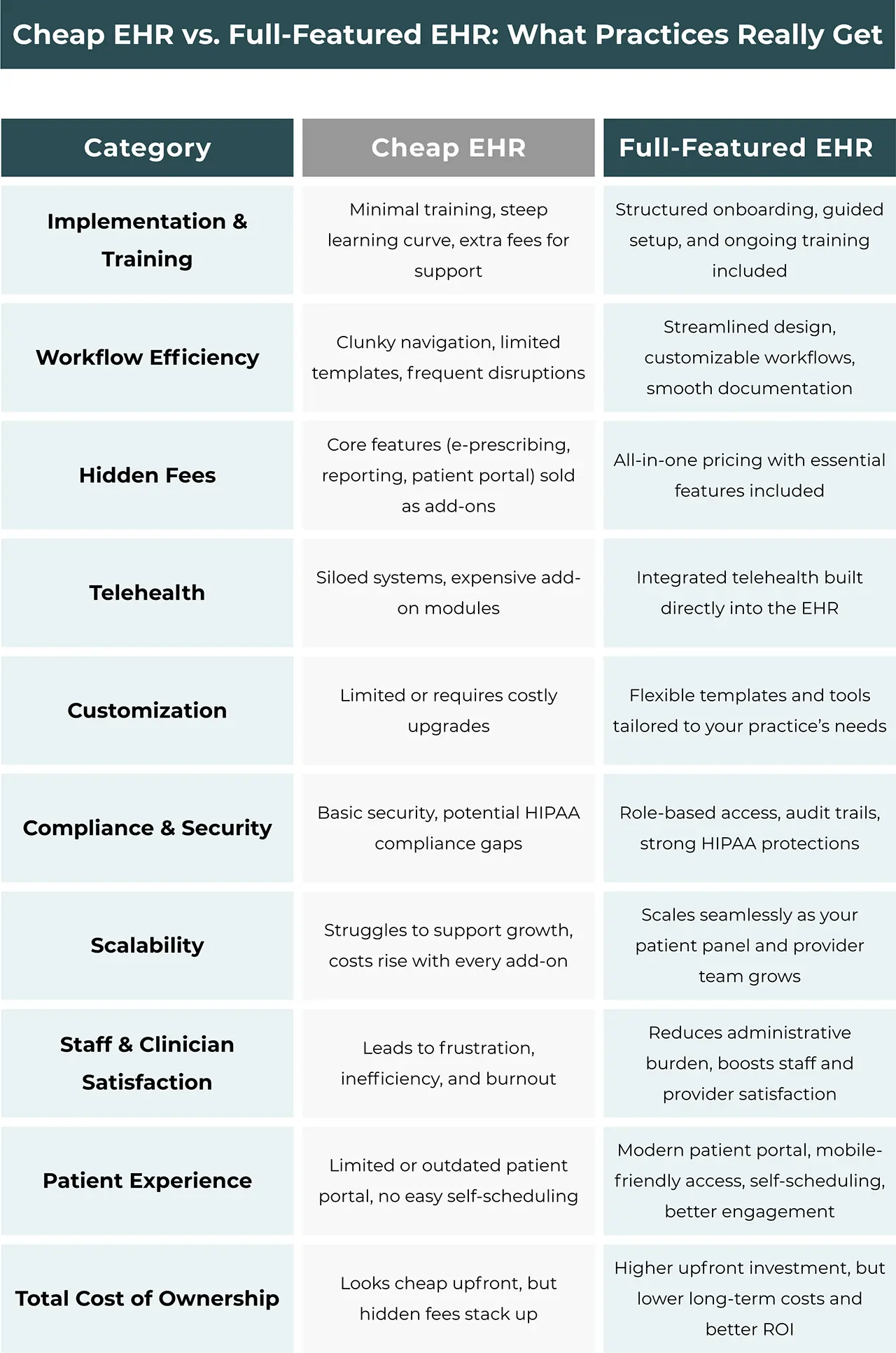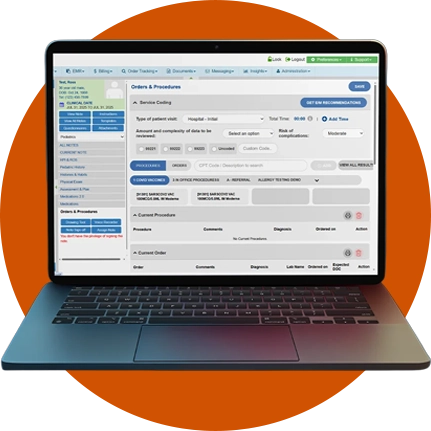Key Takeaways
- When evaluating an ENT EHR system, look beyond the sticker price.
- The real cost of a cheap EHR shows up in inefficiency, staff burnout, compliance risks, and patient dissatisfaction.
- A robust, scalable EHR might require a higher initial investment, but it pays off by streamlining workflows, improving patient care, and avoiding a cycle of add-ons and hidden fees.
- Discover 5 secrets to an easy ENT EHR transition.
Let’s break down the real costs of starting with a system that only appears to save you money.
Table of Contents
The Real Price of Implementation
Implementation is often where the first surprise costs show up. With most inexpensive EHRs, onboarding is typically minimal, with little guidance beyond the basics. That means:
- Limited training that leaves staff guessing how to use the system efficiently
- Extra hours spent troubleshooting instead of caring for patients
- Additional charges for “premium” training sessions or extended support
For ENT practices, this can be especially disruptive. Imagine your staff struggling to document sinus surgery follow-ups or allergy testing notes without the right templates. Instead of focusing on patients, they spend extra hours trying to make a generic system work.
According to KLAS Research, with poor training, only 36% of end-users said they were satisfied with their EHR. Without buy-in, successful implementation becomes nearly impossible, and what once seemed affordable quickly turns into a drain on both efficiency and morale.
Workflow Disruption: The Cost You Don’t See on the Invoice
- Documentation bottlenecks: ENT providers often need specialty-specific templates for laryngoscopy results, audiology exams, or allergy shot protocols. Generic systems force providers into time-consuming manual work.
- Inefficient billing workflows: Gaps in revenue cycle management such as missed codes for tympanoplasties or sinus procedures lead to denials.
- Staff burnout: Extra clicks, repetitive data entry, and broken workflows eat up clinical time and increase turnover.
Every minute wasted navigating poor design is a minute not spent with patients. Those “lost minutes” translate directly into lost revenue and declining quality of care.
The Nickel-and-Dime Trap: Add-Ons and Hidden Fees
- Advanced reporting or analytics (e.g., to track surgery conversion rates)
- Customization of templates and forms for ENT-specific procedures
- Secure messaging or patient portal access
- E-prescribing, especially for controlled substances
What looked like an affordable EHR for ENT practices can quickly balloon into a system that costs more than premium solutions—without delivering the same value.
ENT-Cloud’s full-featured EHR system solves these pain points by delivering reporting, e-prescribing, customization, and patient portal access right from the start.
Telehealth and Siloed Charges
Today, telehealth is non-negotiable for patient access. But with a cheap EHR, you may find telehealth tools are sold as costly add-ons, or worse, not available at all.
For ENT clinics, this can mean juggling separate systems for allergy shot follow-ups, post-op consults, and routine care. Not only does this add unnecessary subscription costs, but it also increases compliance risks and reduces efficiency.

How Much Does an ENT EHR Cost, Really?
So, how much does an ENT EHR cost? The answer depends not just on the sticker price, but on the total cost of ownership (TCO):
- Direct costs: Licensing, setup, support, and training
- Indirect costs: Staff productivity losses, patient no-shows, billing errors, and turnover from burnout
- Growth costs: Paying extra for every new provider, feature, or integration you need as your practice expands
What a Full-Feature EHR Provides From Day One
Unlike limited systems that leave you to figure things out, a robust otolaryngology EHR invests in your success right from the start. This means:
- Free implementation support – ENT workflows, templates, and settings configured correctly from day one. It is helpful to know what a successful implementation looks like as it is one of the signs of having the right EHR vendor.
- Comprehensive training – With proper training, a whopping 83% of end-users report satisfaction compared to only 36% without it.
- Data migration included – Patient records, demographics, and historical notes are moved over smoothly without extra costs.
- Practice-specific customization – ENT-focused templates for audiology, allergy, and surgical care reduce clicks and boost efficiency.
- Ongoing support at no extra charge – Responsive customer support and continuous training ensure your staff stays up to speed.
The difference is clear: instead of being nickel-and-dimed for the basics, you get a partner committed to your long-term success.
Choosing Wisely: Invest in Long-Term Value
Instead of asking “is there a free EHR?”, ask:
- Will this system scale as my ENT practice grows?
- Does it come with specialty-specific tools for otolaryngology care?
- Are telehealth, patient engagement, and reporting built in or sold separately?
- How much support and training are included?
Investing in a robust EHR built specifically for ENT practices is more about value than cost. The right solution fuels your growth, improves clinician satisfaction, and ensures patients get the care they deserve.











